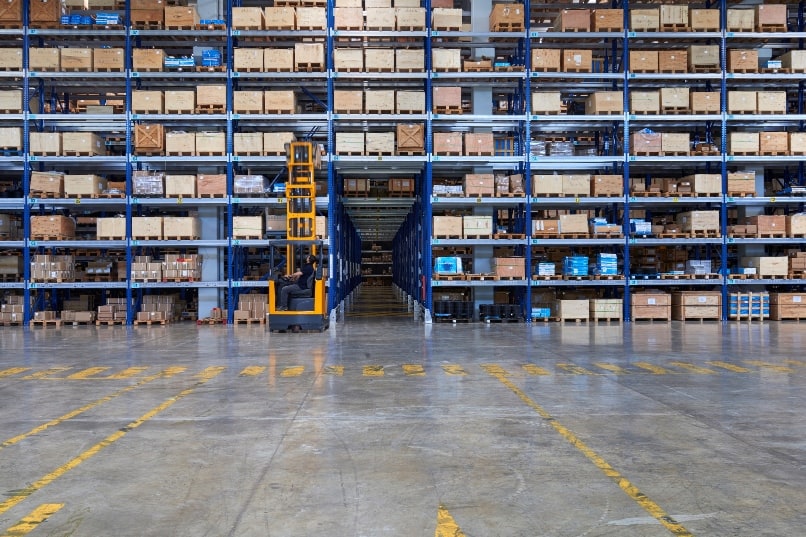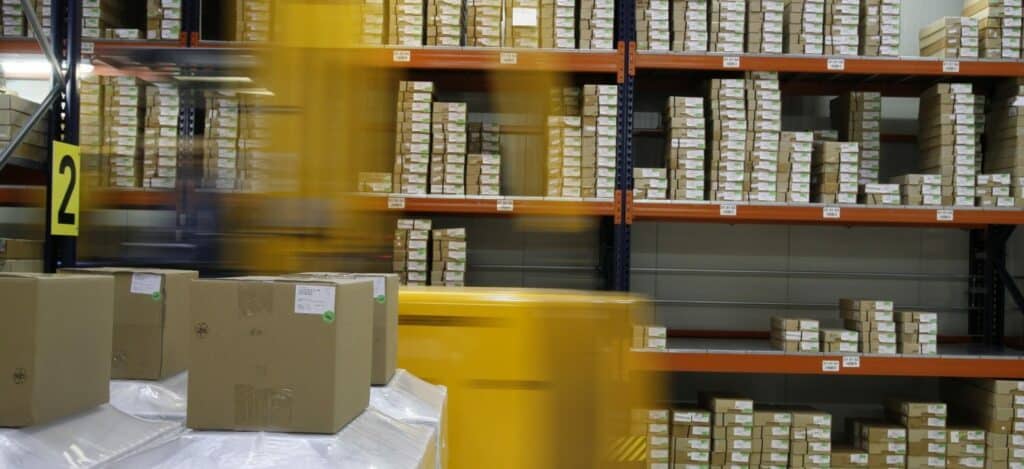Decision-making at the Speed of Business
The commerce is global and regional at the same time, the world is getting smaller and flatter, and Consumer Packaged Goods (CPG) manufacturers operate in this build-anywhere and sell-anywhere market. Consumers are ever more conscious of value, sensitive to health and environmental issues, each demanding more options for his/her money. The retailers, especially in the developed world, demand collaborative practices, continue to increase the quality of their private label offerings and are becoming significant competitors. The e-commerce continues to expand at a rapid pace, including many successful subscription programs selling consumer products. In this most competitive environment, a Consumer Products Manufacturer needs to fight to get space on retailer shelves in each region, to keep those shelves stocked, to compete with e-commerce and to maintain their operating margins. To realize this mission, each CPG manufacturer seeks its own path to gain market share primarily through cost, quality, regional product portfolio, product differentiation and supply chain performance. In this competitive environment, each Consumer Product Manufacturers needs to design and operate its supply chain(s) more effectively.
Traditional supply chain planning software suffers from two fundamental drawbacks:
- They are compartmentalized
- The install base is shackled by old technology
The market now offers a few disruptive alternatives that remove the partitions among critical functional silos: demand, inventory, transportation, manufacturing, replenishment and fulfillment planning in one platform working with data consistent across operational, tactical and strategic horizons. Furthermore, some offer the latest in software technology, supporting visibility, advanced analytics and optimization capabilities on the same platform. There are solutions with a comprehensive data model, using both SQL or NoSQL database technologies, a configurable in-memory engine, adaptive learning and configurable web UI, all contributing to significantly shorter deployments – impossible to match for software companies burdened with older technology, disparate data models from different acquisitions and high dependence on manual Excel manipulation to turn the output into action.
As a part of their digitization initiatives, CPG manufacturers need to explore the utility of these disruptive alternatives and adopt test-and-learn practices. A few leading ones did, as they invested successfully in new technologies, including Software as a Service offerings (SaaS on Cloud) that integrate seamlessly with their existing ERP systems, replacing critical visibility, analytics and supply chain planning functionality with surgical precision and in a minimally invasive manner. Yet, most continue to face several key challenges in the area of supply chain visibility, analytics and planning.

Challenge #1– Big Data Analytics and End-to-end Visibility
Large e-commerce companies have unconventional supply chain processes and technology to handle massive number of SKUs, support 24/7/365 selling, provide the flexibility to change prices many times a day, extract-transform-load data from such diverse sources as web searches, basket transactions, click rates, weather, real-time signals from channel competitors and the marketplace.
The big data are used for understanding a customer’s propensity to buy, propensity to return, conversion of clicks to orders, demand sensing signals, individualized promotions, etc.
For example, a European e-commerce company that sells 2M+ SKUs across 30 product categories deployed Procurement Planning, Big Data Analytics and End-to-end Visibility solutions on a single platform integrated to their ERP, CRM, CSM, WMS and Google Analytics. The platform capabilities comprise descriptive analytics to review historical data, diagnostic analytics to understand the root-cause of aging stock, exception-based planning to bring sales in line with budget targets, predictive analytics for sensing short-term demand and estimating promotion lift, forecasting supported by machine learning to process click sources and click rates, procurement planning supported by automation and machine-learning.
Within a year, the company increased its revenue by 94%, increased its 24-hour fulfillment rate from 73% to 93% and reduced its unproductive stock by 50%, while maintaining a common Excel-free planning process across 30 categories.
CPG manufacturers need to take advantage of the unique combination of advanced analytics capabilities, scalability to handle big data and the supply chain expertise to turn big data into insights and decisions for better business results.
Challenge #2– Concurrent Optimization
Today, planning systems operate within the scope of classical silo definitions: demand forecasting, inventory optimization, replenishment planning, production planning, materials planning, transportation planning, order fulfillment, etc., each with discrete plans generated typically in sequential batch runs. Theory and practical implication are clear: optimizing each silo does not imply that you optimize the end-to-end system. An overall best plan requires that one or multiple silos or sub-processes need to work together, and perhaps compromise its own KPIs for the sake of the end-to-end system. To the contrary, planning systems should drive towards true concurrent optimization to achieve the best result, ideally coming up with multiple scenarios (see challenge #3). As an example, the solution should look at optimizing availability, fulfillment, source determination, routing, warehouse handling and production capacity together and concurrently, focused on minimizing Total Cost to Serve.
A $70+ billion retailer uses concurrent optimization for seasonal decisions: for each selling season, how frequently to place an order for each vendor by SKU-region, how to flow the product from vendor to store (i.e., direct to store, consolidate at a regional cross-dock and send to store, consolidate at a regional cross-dock, send to another regional cross-dock and send to store), and which transportation mode to use (i.e., parcel, LTL, multi-stop FTL with dedicated fleet within the region, multi-stop FTL with spot purchase). The objective is to minimize the Total Cost to Serve which includes inbound transportation with multiple modes, interfacility transportation, outbound transportation with dedicated fleet, DC inbound/outbound handling, in-transit inventory due to transportation mode, cycle inventory (related to order frequency) and safety stock (related to target fill rates, demand variability and lead-time variability).
The retailer traded off inventory investment (i.e., more frequent direct delivery of small quantities results in lower inventory) and transportation cost (i.e., less frequent consolidated delivery of large quantities results in lower transportation spend) while meeting service level targets. The reported annual savings exceeded $100M within 12 months of the implementation.
CPG manufacturers need to use concurrent optimization in joint manufacturing+ distribution decisions or fulfillment+ transportation decisions, and target Total Cost to Serve savings, otherwise impossible when each silo makes its own decisions independently.

Challenge #3 – Scenario-based Planning
CPG manufacturers need a process that generates several plan scenarios and a user-friendly platform to evaluate them for possible execution decisions rapidly. The planning process should be automated, repeatable and independent of Excel. Some solution providers now enable scenario-based planning that use adaptive learning algorithms to select the right plan among the scenarios based on automated processing of discriminating factors, e.g., total set-up times, order priorities, due-date violation, $/qty, $/vol, $/order-period, etc.
A furniture manufacturer uses a state-of-the-art platform to generate multiple manufacturing plans automatically (i.e., the input data are automatically extracted from the ERP, the plan is generated and the output data are automatically uploaded to the ERP). The plan comprises multiple objectives and multiple constraints, each combination proving a feasible plan scenario:
- Objective 1: Maximize total output (i.e., reduce set-ups)
- Objective 2: Minimize total lateness (i.e., due-date violation)
- Constraint Set 1: Due-dates are hard constraints, the worker capacity violation (overtime and/or additional on-demand workers) incurs a $/unit-period penalty
- Constraint Set 2: Due-date violation incurs a $/unit-period penalty but the worker capacities and material availability are hard constraints, i.e., use whatever capacity you have
- Constraint Set 3: Due-dates and worker capacities are soft constraints and the material availability is a hard constraint
The manufacturer reports 30% reduction in late orders and higher OTIF performance within 8 months of deployment.
Challenge #4– Maintenance of Planning Parameters
Traditionally planning systems process deterministic input parameters (forecast, production capacity, customer service levels, inventory targets, lead-times, etc.) to provide very specific output (production, fulfillment and transportation plans by product/date etc.). With cognitive computing, the planning solutions should be context-aware, recognize changes in parameters, understand implications (cost, time, customer service, etc.), alert the planner of the changes, offer alternatives to reset a planning parameter (or recommend the right parameters) and finally update them in planning systems with ease. The solution should self-learn and deal with patterns in addition to deterministic numbers.
The market has just a few examples of state-of-the-art platforms that use advanced algorithms and machine learning to:
- Automatically track the lifecycle of purchase orders, transportation lead-times, forecast errors and demand/supply variability, to adjust the target service levels and to automatically re-optimize inventory investment levels at the SKU-location level
- Find clusters and patterns to predict demand in highly dynamic and price-sensitive markets
- Measure the effect of promotions and decide on markdown timing and the price band
- Provide product portfolio recommendations based on actual market data

Challenge #5– Autonomous Supply Chain
Systems that manage operational execution are dumb! ERP or CRM, TMS or WMS, these systems do only what they are told. Companies make significant investments to generate “optimal” plans, yet must tell the execution systems what to do through Excel manipulation or rules (of thumb). This is because most classical planning solutions lack the mathematical efficiency and the computing power to accommodate big data, large SKU count, scenarios and contingencies to build an immediately executable plan. The classical approach involves functional breaks, sequential decisions, and Excel+people to make a plan executable.
The concept behind Autonomous Supply Chain is quite simple: tightly couple planning systems to execution systems so that you can automatically generate detailed and specific instructions by SKU so that the operational systems can take action – how much to build and when, how to allocate, what to order, when to order, and how to transport, while considering real-life operational constraints and meeting on-time fulfillment and availability targets. To be able to do this with minimal or no human intervention, you need concurrency, detailed plan scenarios and high speed available only via new technology.
Concurrency allows you to trade off multiple functional decisions at one time and come up with an overall optimal decision, rather than settling for the sub-optimality of sequential decisions. Scenario planning provides the ability to generate alternate solutions with multiple goals, often requiring a technology such as Goal Programming or Adaptive Learning to automatically choose the optimal scenario.
Speed is necessary to quickly turnaround large volumes of data, i.e., high SKU count, to build detailed plans and meet the timeliness requirement of execution.
While most would agree that concurrent planning is certainly the most efficient way to manage operations, many loathe to abdicate decision responsibility to a computer system. Innovative companies utilize the test-and-learn approach to close the plan-execution gap gradually, making each functional area comfortable with the checks and balances to ensure decision quality and to minimize risk. Routine decisions are automated first and only the exceptions are reviewed prior to execution (based on rules and tolerances).
A $3.5B consumer products company has been using Closed-loop Operational Management for the past 4 years for its daily Order Fulfillment/Allocation and multi-stop multi-mode Route Planning. The plans are automatically created each day with three different objectives:
- Minimize total transportation cost
- Maximize total margin
- Meet a specified sales amount in any level of aggregation, e.g., geographic, item group
In Goal Programming mode, the system may maximize total margin but sacrifice a given percent on the margin objective to minimize total transportation cost. The scenario results are automatically uploaded to the ERP and a line manager selects – via his smart phone- the scenario to execute that day. One click on the smart phone commands the ERP to start all execution activities: printing the waybills, generating pick lists on 4 DCs, assigning DC gates, sending tender requests to the TMS, sending ETAs to cross-docks as well as customer delivery locations, etc. Previously, inventory allocation, customer status checks and transportation planning were planned separately in different departments with a combined staff of 25 FTEs taking several days. Now, the entire process is managed daily by one highly analytical member of the millennium generation.
Measurable value to the client: 18% lower overall spend and higher fill-rates within a year of go-live, based on prior baselines.
In closing, I believe the future is already here for some and there are legitimate success stories, but most Consumer Products Companies need to overhaul their supply chain visibility, planning and analytics capabilities to meet the challenges of the current market conditions.








